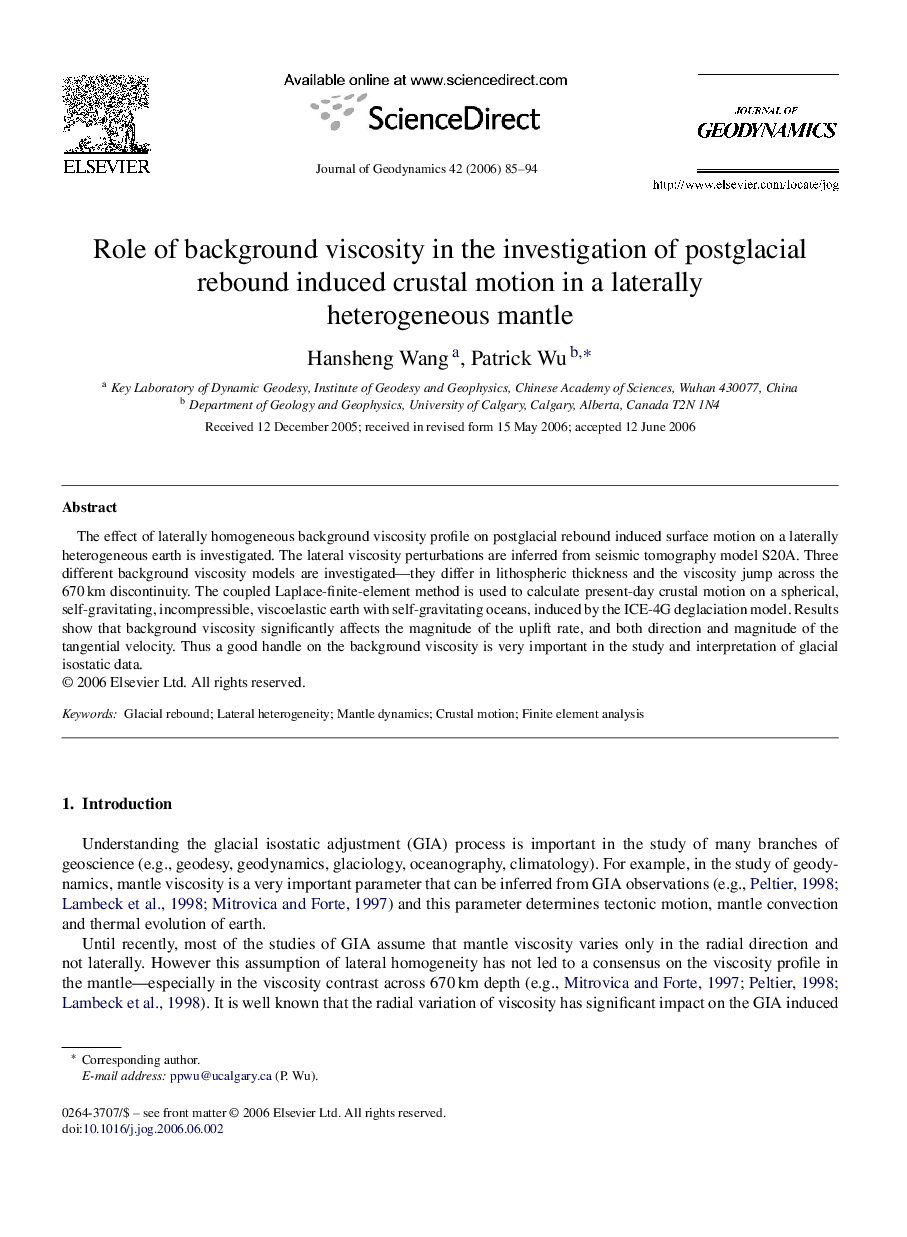| Article ID | Journal | Published Year | Pages | File Type |
|---|---|---|---|---|
| 4688747 | Journal of Geodynamics | 2006 | 10 Pages |
Abstract
The effect of laterally homogeneous background viscosity profile on postglacial rebound induced surface motion on a laterally heterogeneous earth is investigated. The lateral viscosity perturbations are inferred from seismic tomography model S20A. Three different background viscosity models are investigated-they differ in lithospheric thickness and the viscosity jump across the 670Â km discontinuity. The coupled Laplace-finite-element method is used to calculate present-day crustal motion on a spherical, self-gravitating, incompressible, viscoelastic earth with self-gravitating oceans, induced by the ICE-4G deglaciation model. Results show that background viscosity significantly affects the magnitude of the uplift rate, and both direction and magnitude of the tangential velocity. Thus a good handle on the background viscosity is very important in the study and interpretation of glacial isostatic data.
Related Topics
Physical Sciences and Engineering
Earth and Planetary Sciences
Earth-Surface Processes
Authors
Hansheng Wang, Patrick Wu,
